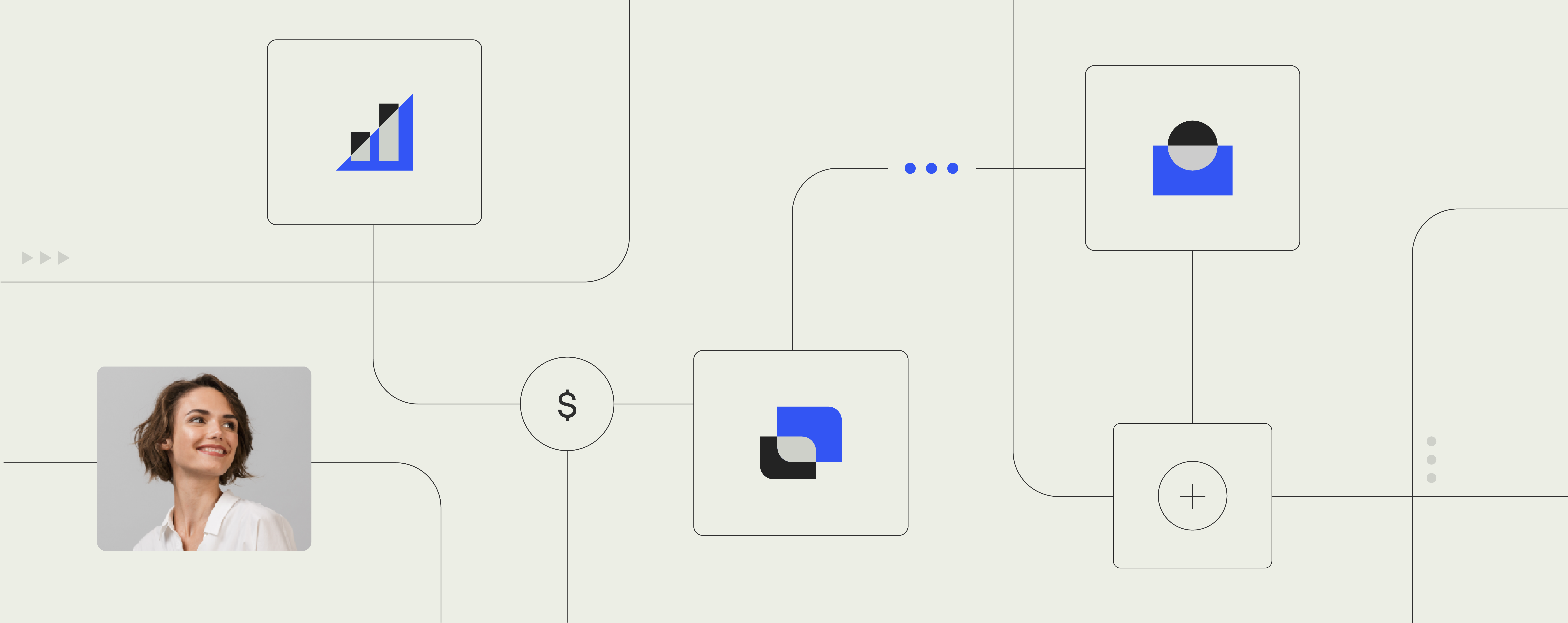Google’s G Suite vs. Microsoft’s Office 365: A comparison cheat sheet

In 2007, Google launched its business productivity suite under the Google Apps Premier Edition brand.
It was renamed Google Apps for Work and rebranded as G Suite in late 2016.
This means that Google now offers similar services to Microsoft Office 365, aiding digital transformation by bringing well known services for customers to the cloud for email, documents, online chat, and video conferencing.
At first glance, Office 365 and G Suite seem to offer pretty much the same productivity features and collaboration tools. But when you look beneath the surface, it’s easier to see the differences between the two services, which are important when making a decision between which one to choose.
Below, we provide ean overview of the importance differences in features and tools between Office 365 and G Suite.
Summary
Similarities and differences between Office 365 and Google G Suite
Office 365 and Google G Suite are two of the main cloud-based business productivity suites, and it can be challenging to know which to use for your organization. In our Office 365 vs G Suite comparison cheat sheet, we discuss the similarities and differences between them both, and how they impact document productivity across organizations.
Cheat sheet: A side by side comparison of G Suite and Office 365 features and tools
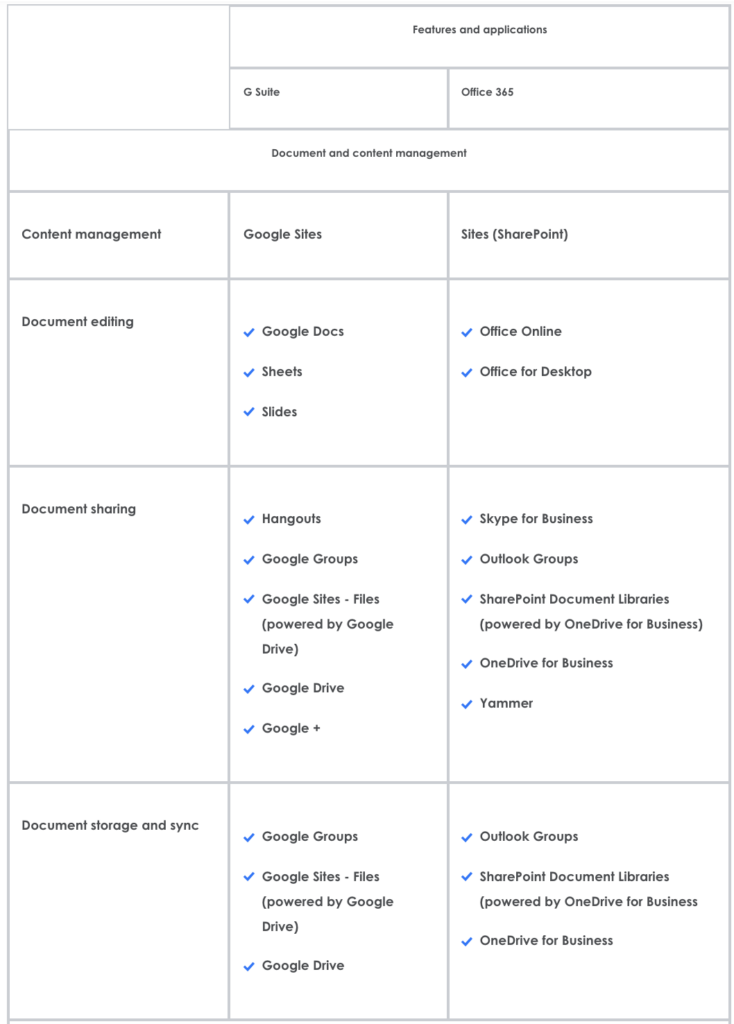
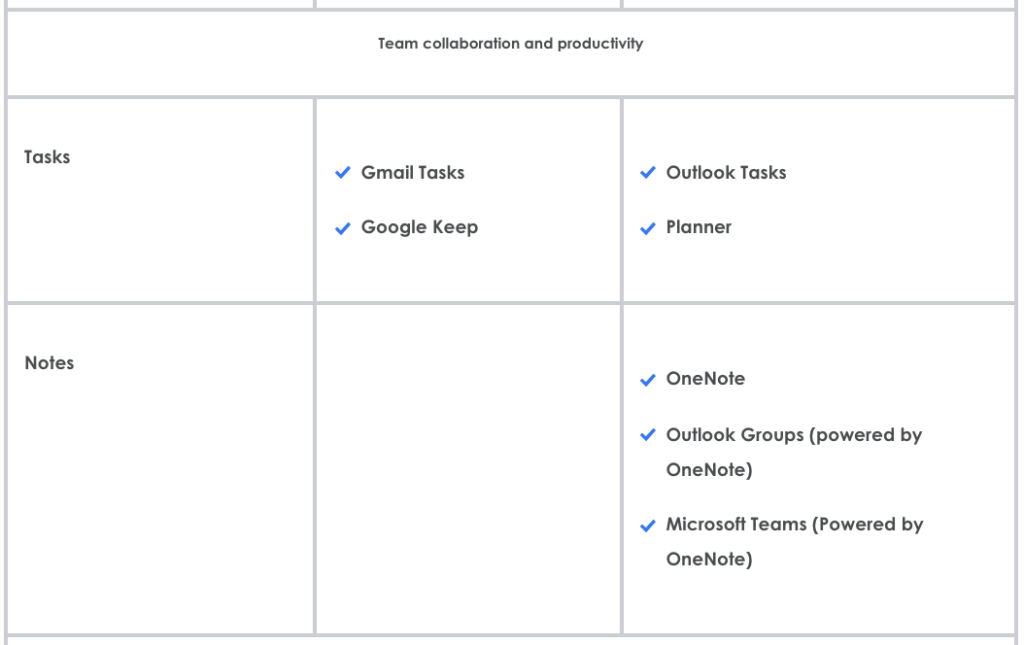
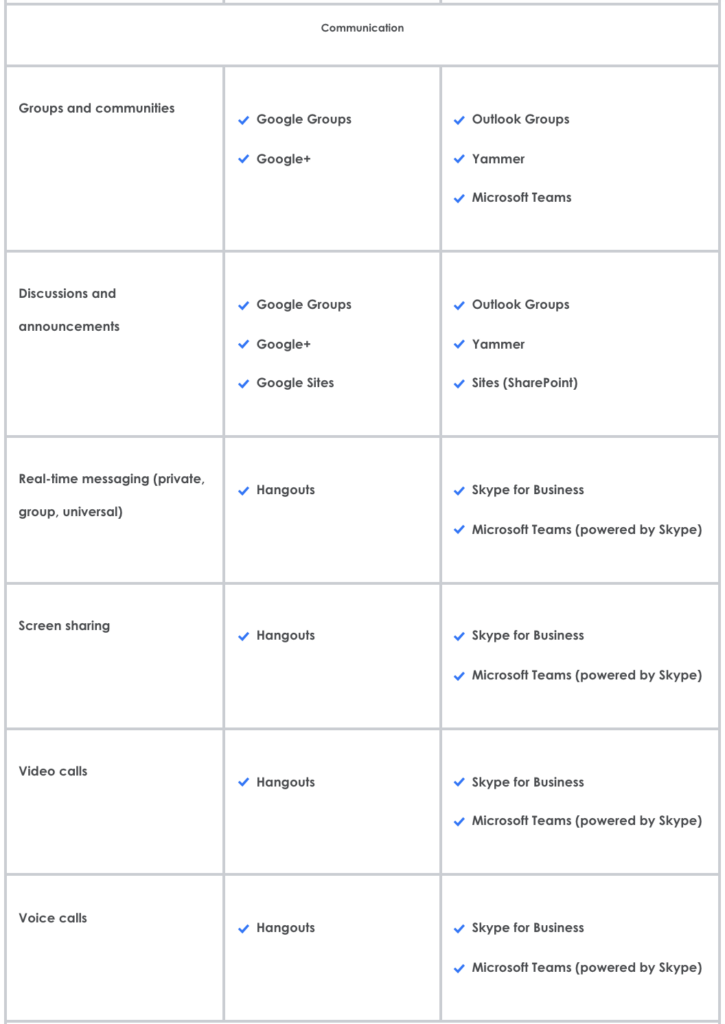
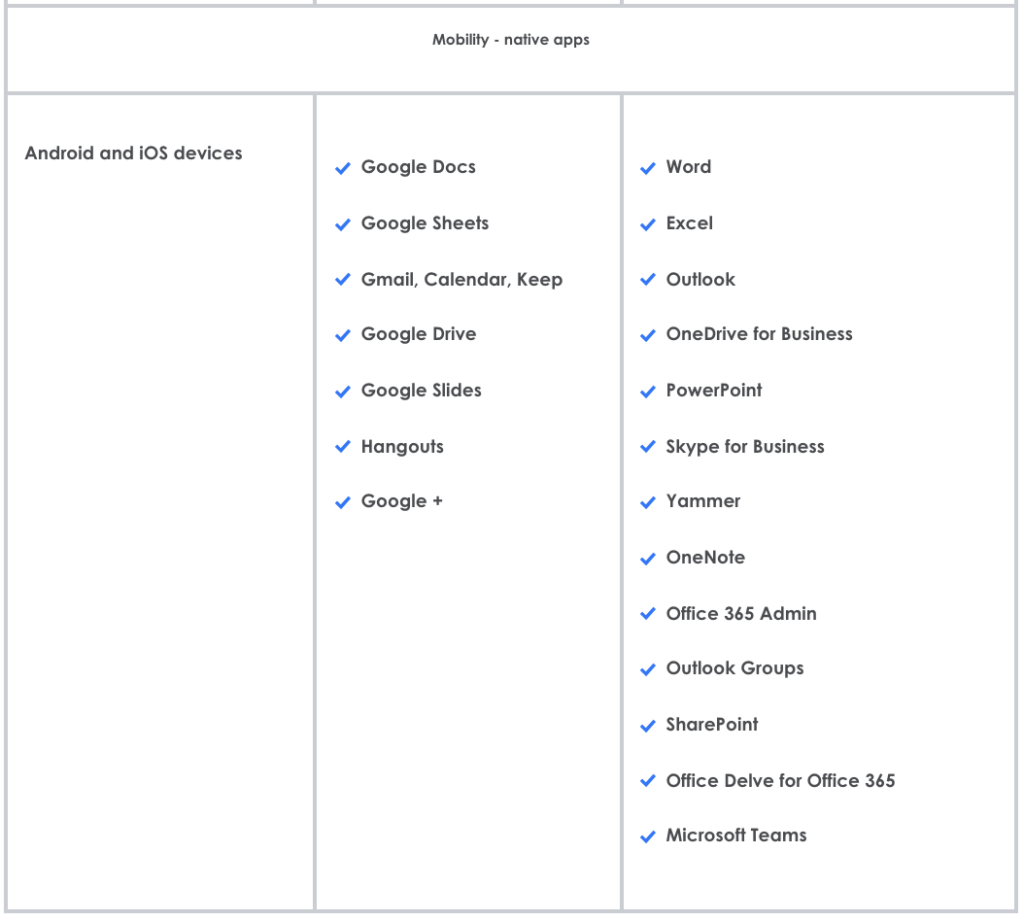
Plans and pricing differences
In terms of pricing, G Suite offers three pricing options: G Suite Basic (previously Google Apps for Work) which starts at for $4.68 per user/month, G Suite Business (formerly known as Google Apps Unlimited), which is offered for $9.36 per user/month, and G Suite Enterprise at €23 per user/month. G Suite Business includes all services entailed in G Suite Basic, plus unlimited cloud storage and e-discovery for emails, chats, and files. G Suite Enterprise offers all the above, but includes more sophisticated data storage and security features.
Similarly, Office 365 offers a variety of pricing options for businesses. To accommodate different business needs for both small business and large enterprises, Microsoft offers several plans including various features and capabilities, which include Office 365 Business for €8.25 per user/month, Office 365 Business Premium for €12.50 per user/month, and Office 365 Business Essentials for €5 per user/month. Different plans are recommended depending on the needs, devices and activities of the organization, so all the needs are provided for, but unnecessary services aren’t paid for.
Bridge the functionality gap
Get an overview of Microsoft and Google Workspace functionalities and achieve full migration to Google Workspace with Templafy.
Document productivity: How do G Suite and Office 365 help you work with documents in a smarter way?
At Templafy, we care about how to simplify the creation of professional business documents and streamline how employees work with them. Naturally, we couldn’t help but have a look at the document productivity tools offered by these services, and see how the platforms’ biggest selling points points perform.
Through the lens of document productivity, we compared some of the most popular and widely used applications between Microsoft’s cloud-based Office 365 and Google’s G Suite.
Word processing: Microsoft Office Word vs. Google Docs
When it comes to document creation and processing, Microsoft Word is undoubtedly the most popular productivity tool worldwide. It’s the industry-standard word processing tool used on most computers around the globe, almost everyone knows how it works and a huge number of people work with it on a daily basis.
The application offers hundreds of templates to choose from and built-in editing tools to help generate professional documents for personal and business-related use (Word for Desktop includes editing and markup tools for sharing and editing among teams, but Office 365 versions of the program allow for web-based editing and sharing in real-time).
G Suite and Google Docs have a different look and feel to Microsoft Word. But, just like Word, Google Docs has a wide range of document templates for all occasions. These are formatted differently to Word templates as Word templates are created through content controls, but Google Docs are created through bookmarks. However, for the end user, the differences are few, and both are similarly easy to use once you are familiar with the menus. Google Docs can also be used cross-platform, syncs automatically, and offers the same shareable real-time collaboration benefits as Office 365. It is also continuously being updated, so the functionalities offered by Google Docs are growing.
Spreadsheets: Microsoft Office Excel vs. Google Sheets
Excel is the go-to spreadsheet app for most people who work with numbers. The application can do thousands of different things (you probably haven’t even touched a lot of its possibilities), and the easy-to-navigate toolbar allows you to quickly access the features you want, turning it into an indispensable tool for budgeting, financial forecasting, and data entry.
Google makes inroads with Sheets, which is included in G Suite, but the program is much simpler than Excel. Google Sheets’ key advantage however, lies in the ability to collaborate. Most people use Excel to manage simple lists of data, utilizing only 1-5% of Excel’s true potential such as formulas, filtering, tables, macros, etc. When you are required to share simple numbers with 10 different people in a group, the collaboration feature of Google Sheets far outweighs the back and forth of e-mailing Excel files between people.
Slideshows: Microsoft Office PowerPoint vs. Google Slides
When it comes to slideshows, the options available for creating presentations online are fairly similar, and the choice between PowerPoint and Google Slides is a mere matter of personal preference and habit.
Microsoft PowerPoint has some different features to Google Slides. You can draw up a presentation from scratch, choose from hundreds of templates, and easily customize slide effects. It also has a neat trick to do things in a big way – you can link up your slideshow when it’s in presentation mode with a stylus (or simply your finger).
Google Slides is still a way from PowerPoint regarding some of these features, although it does provide templates and basic features in a similar way for presentation creation. As with Sheets, the biggest reason to go with Google Slides is collaboration. The ability to easily share and simultaneously edit slideshows is the platform’s biggest selling point, along with easy sharing on the web.
Templafy in Office 365 and G Suite
Although, as discussed, the services of Office 365 and Google G Suite differ, Templafy works in similar ways in them both. Through the Dynamics and Distribution modules, document productivity is increased, and workflows are more efficient for all employees across the organization, regardless of whether they’re working in Office 365 or G Suite. Templafy is an extra layer to boost workplace productivity and collaboration in the cloud, designed to help employees in a manner that is intuitive to their workflow and simple to use. It enhances the offerings of both Office 365 or G Suite and provides huge benefits for both individual employees, and the entire organization.


